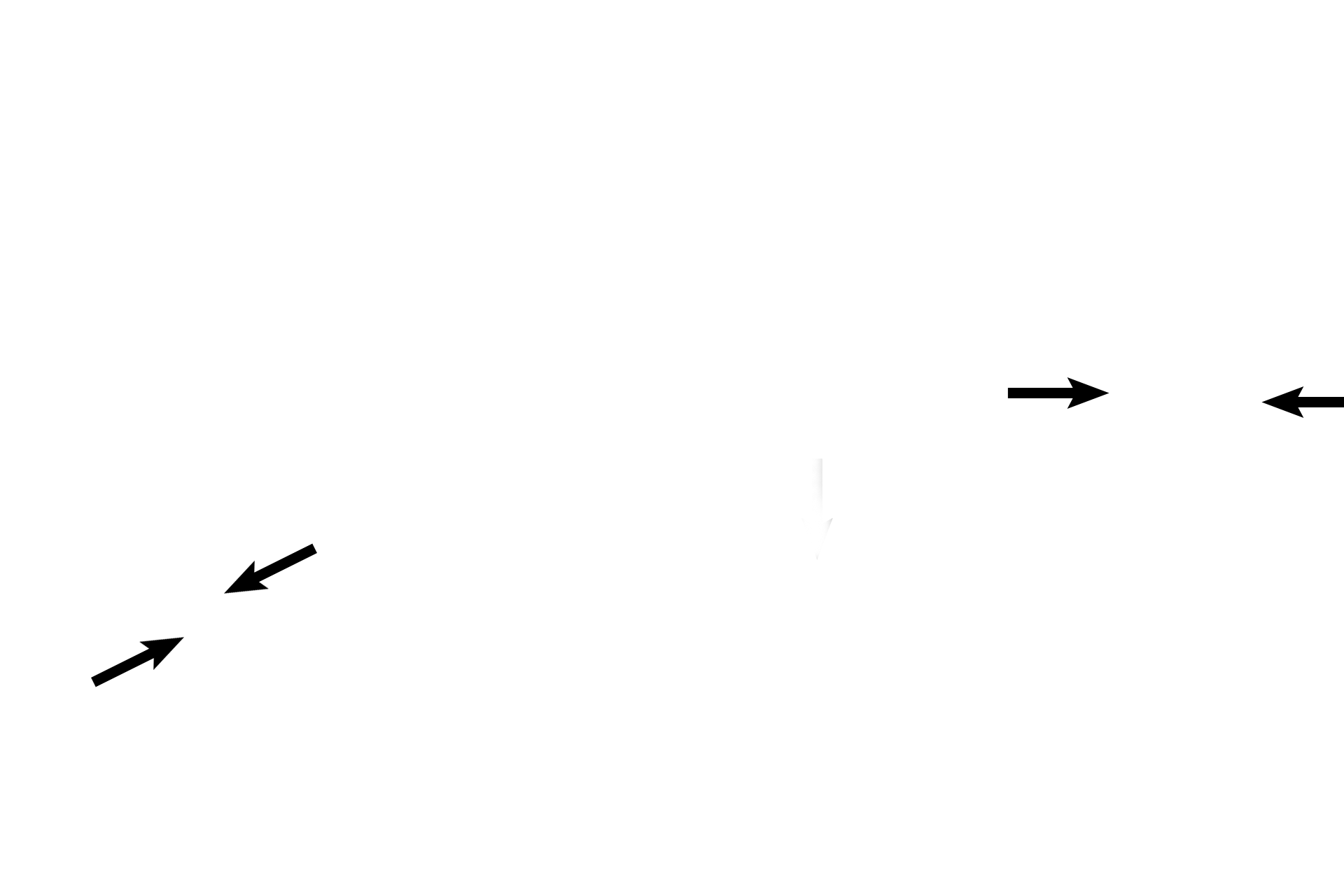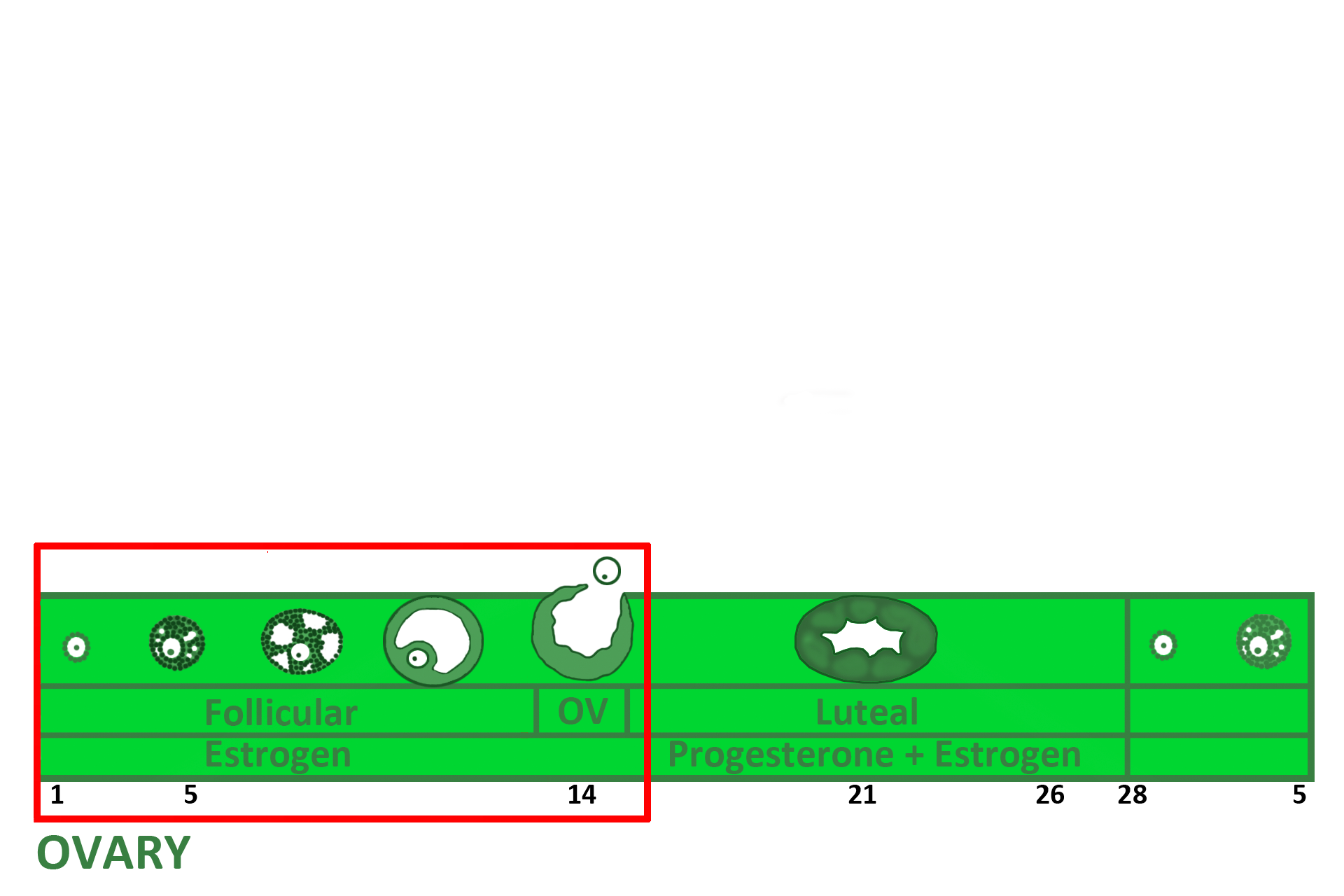
Ovary: secondary follicle
A large secondary follicle, seen at two different magnifications, retains the same configuration seen in the previous image except that its size has increased. 100x, 1000x

Primary oocyte >
The primary oocyte, arrested in prophase of the first meiotic division, is surrounded by the zona pellucida. Stratum granulosal cells form a hillock surrounding the oocyte, termed the cumulus oophorus; the first row of cumulus cells outside the zona pellucida is the corona radiata. The cumulus oophorus, including the corona, accompanies the oocyte during ovulation.

Zona pellucida
The primary oocyte, arrested in prophase of the first meiotic division, is surrounded by the zona pellucida. Stratum granulosal cells form a hillock surrounding the oocyte, termed the cumulus oophorus; the first row of cumulus cells outside the zona pellucida is the corona radiata. The cumulus oophorus, including the corona, accompanies the oocyte during ovulation.

Corona radiata
The primary oocyte, arrested in prophase of the first meiotic division, is surrounded by the zona pellucida. Stratum granulosal cells form a hillock surrounding the oocyte, termed the cumulus oophorus; the first row of cumulus cells outside the zona pellucida is the corona radiata. The cumulus oophorus, including the corona, accompanies the oocyte during ovulation.

Cumulus oophorus
The primary oocyte, arrested in prophase of the first meiotic division, is surrounded by the zona pellucida. Stratum granulosal cells form a hillock surrounding the oocyte, termed the cumulus oophorus; the first row of cumulus cells outside the zona pellucida is the corona radiata. The cumulus oophorus, including the corona, accompanies the oocyte during ovulation.

Granulosal layer >
The stratum (or membrana) granulosum surrounds the antrum. Under the influence of LH from the pituitary, the theca interna produces testosterone, which is transported to granulosa cells for chemical modification (aromatization) to form estrogen. Granulosa cells are stimulated by the action of FSH from the adenohypophysis.

Theca interna
The stratum (or membrana) granulosum surrounds the antrum. Under the influence of LH from the pituitary, the theca interna produces testosterone, which is transported to granulosa cells for chemical modification (aromatization) to form estrogen. Granulosa cells are stimulated by the action of FSH from the adenohypophysis.

Theca externa >
The theca externa surrounds the theca interna and serves as a reserve-cell source for the interna.

Antrum >
A single, large, fluid-filled antral space is indicative for a secondary follicle.

Graphic: follicular phase >
During the follicular phase of the ovarian cycle (Days 1-14), follicles housing oocytes are growing and secreting estrogen.

Ovulation >
On Day 14 a surge of LH stimulates a secondary follicle to greatly enlarge and form a mature or Graafian follicle. Simultaneously, the primary oocyte completes the first meiotic division to form a secondary oocyte and the first polar body. At ovulation, the ovarian-follicular wall ruptures, releasing the secondary oocyte and its polar body, enclosed in the cumulus oophorus.